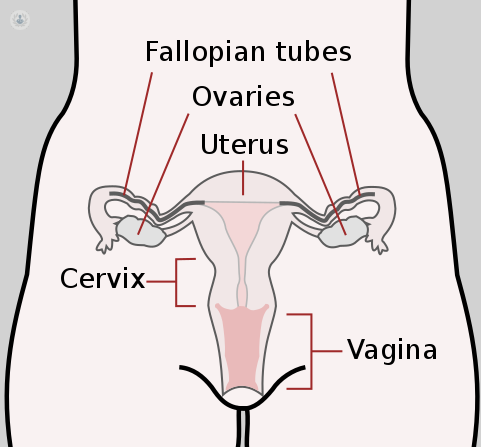

What is tubal ligation?
Tubal ligation is a surgical procedure performed on some women to close the fallopian tubes which are the tubes that connect the ovaries to the uterus. This procedure is performed as a permanent method of birth control (sterilisation). By closing the fallopian tubes, eggs released from the ovaries are prevented from travelling down them and sperm are blocked from travelling up to meet the egg. This intervention can be performed on an outpatient basis and lasts approximately 30 minutes, or it can be carried out following childbirth. Anaesthesia can be epidural, local or general; depending on each case. This is a permanent procedure and generally cannot be reversed, however, fewer than 1 in 100 women will become pregnant after the procedure.

Why is tubal ligation done?
The goal of this surgery is to prevent access of the eggs to the fallopian tubes and to the uterus, making it a permanent form of contraception. It is usually recommended for women who know for sure that they do not want to become pregnant in the future. Whilst this works as a contraceptive method, it does not protect against STIs and does not affect the menstrual cycle. Another benefit of this method is that it decreases the risk of ovarian cancer.
What does tubal ligation consist of?
The surgeon makes one or two small incisions in the abdomen of the patient. Once the surgical instruments are introduced, the fallopian tubes are sealed, either by cauterising them or by using special clips or rings. This surgery can be done right after having a baby or during a caesarean section.
Preparation for tubal ligation:
Before surgery you must go on an 8-hour fast of solids and liquids. That day it is important to take the drugs that the doctor has recommended. If you are not having the procedure following childbirth, you will have to complete a pregnancy test to ensure you are not pregnant.
Like any surgical procedure there are risks to be aware of, including:
- Infection
- A failed procedure, resulting in pregnancy in the future (which has a greater risk of being ectopic)
- Reaction to the anaesthesia
- Damage to surrounding tissue
Aftercare following tubal ligation:
Tubal ligation does not usually require a hospital stay, but if you have the procedure after childbirth, you will remain in hospital until you are discharged. It is not uncommon to feel some pain, cramping, bloating or dizziness following tubal ligation. You are advised to bathe 48 hours after the procedure, taking care to gently clean the incision.
